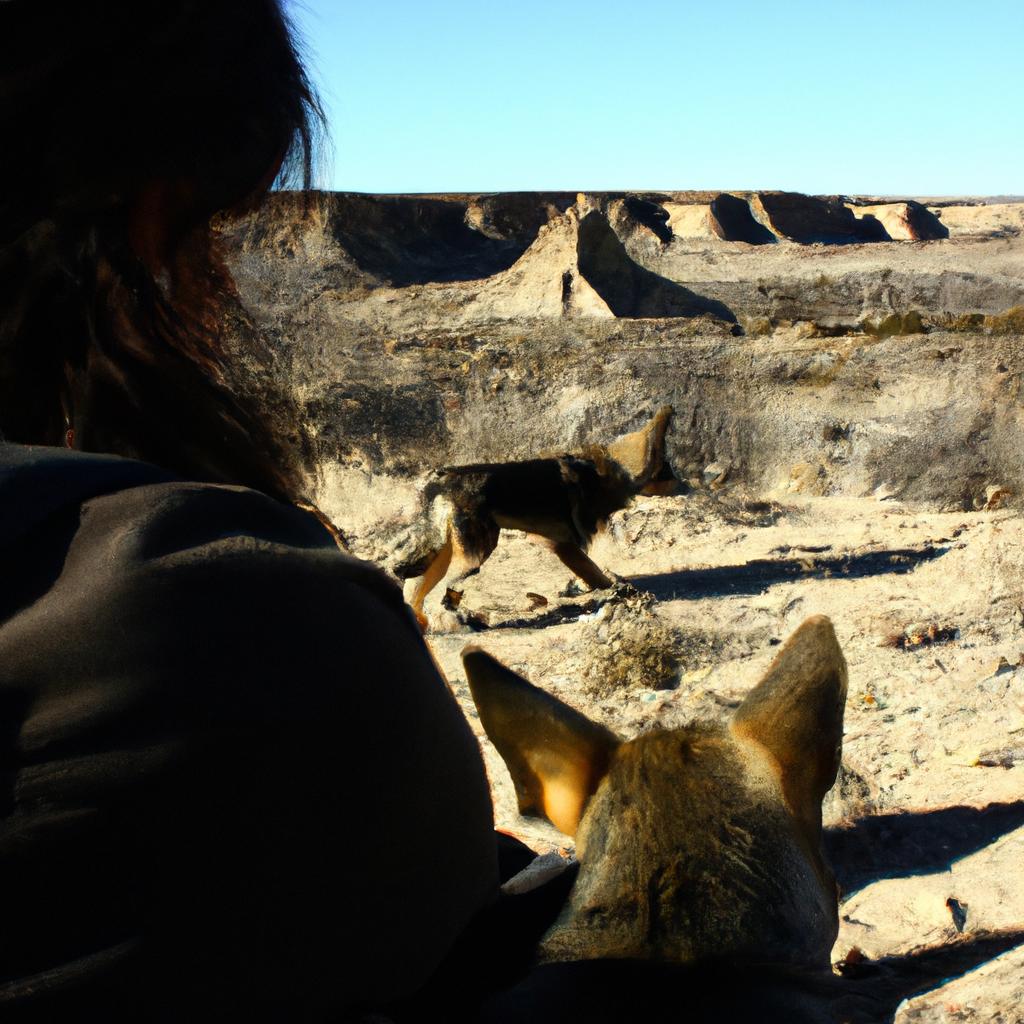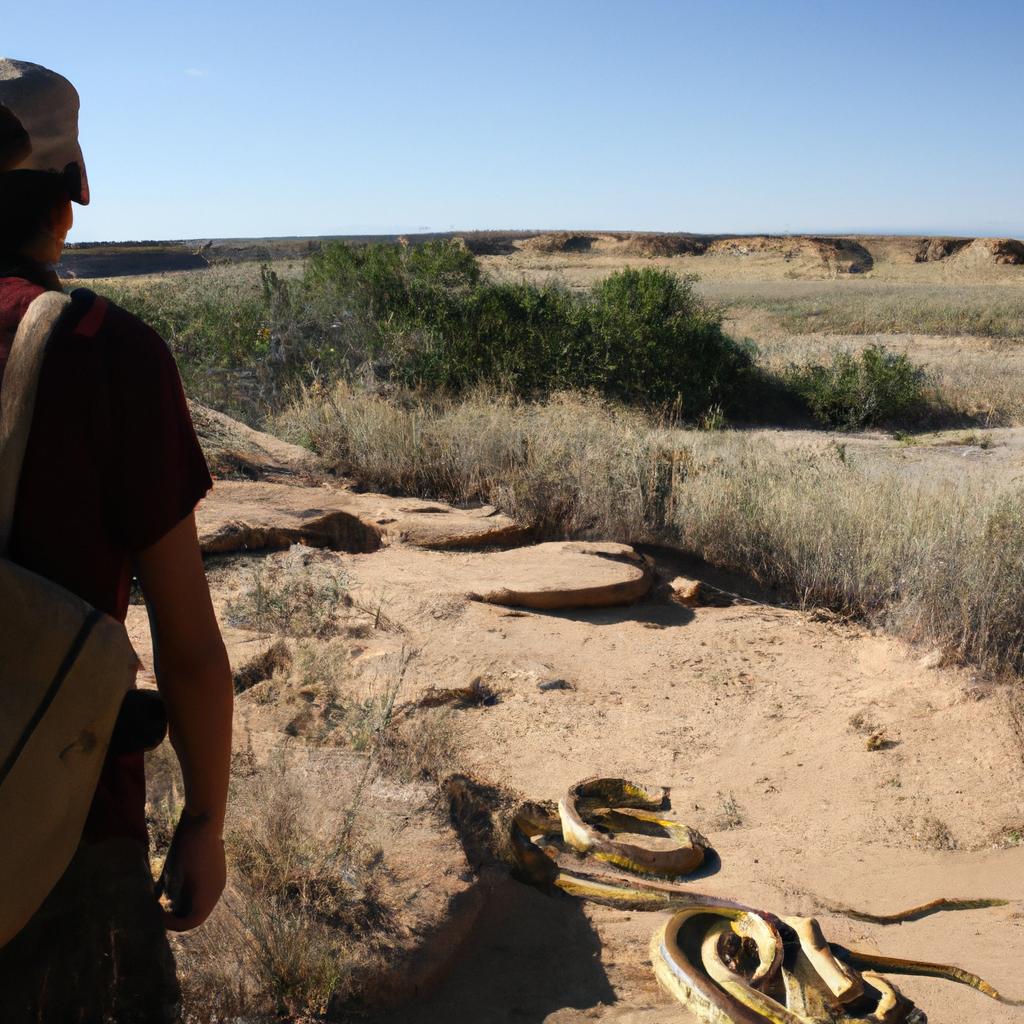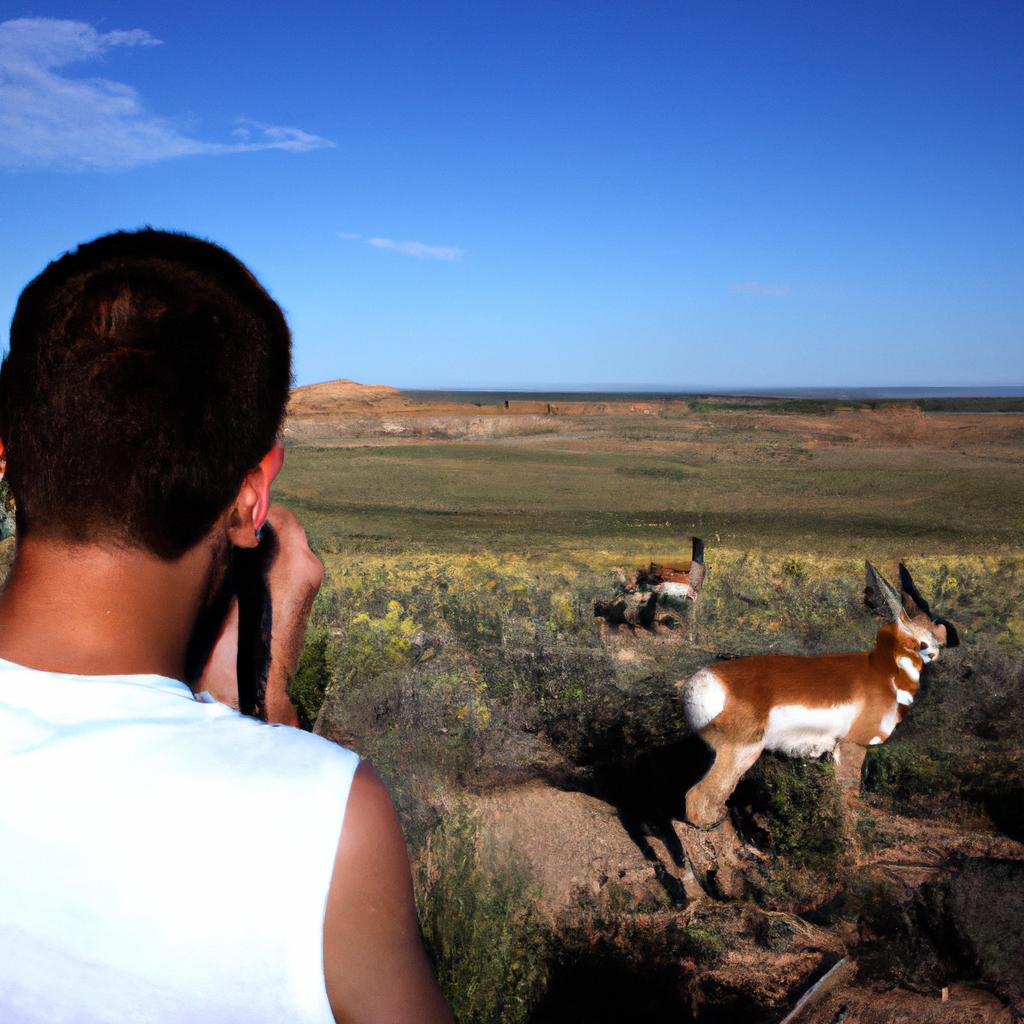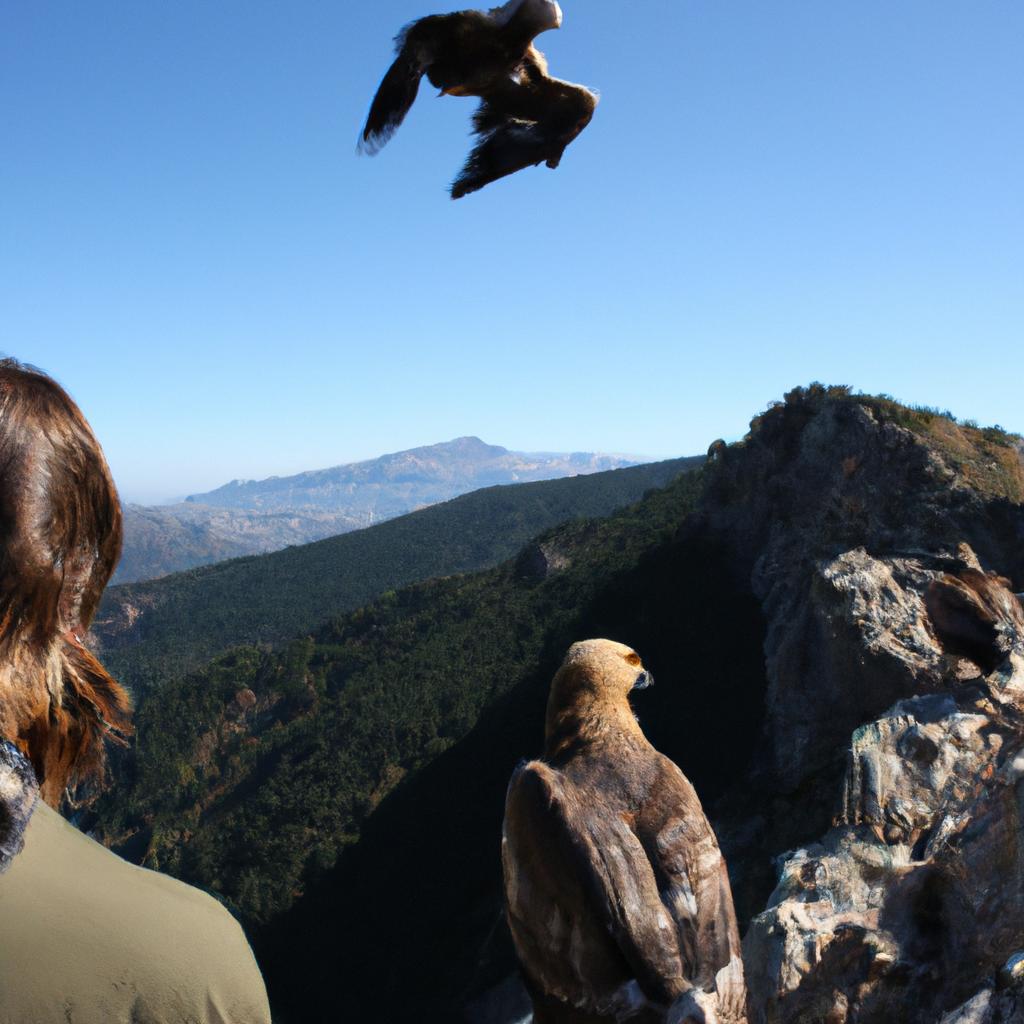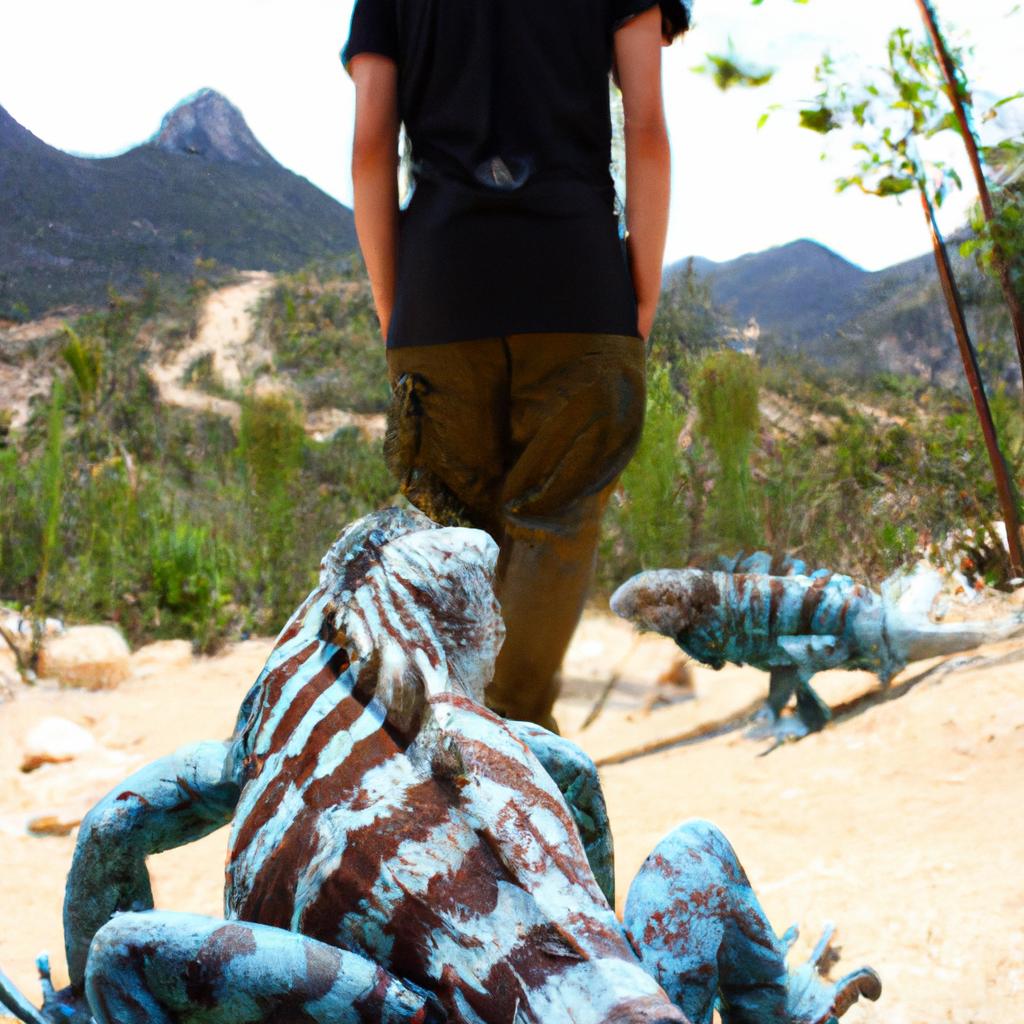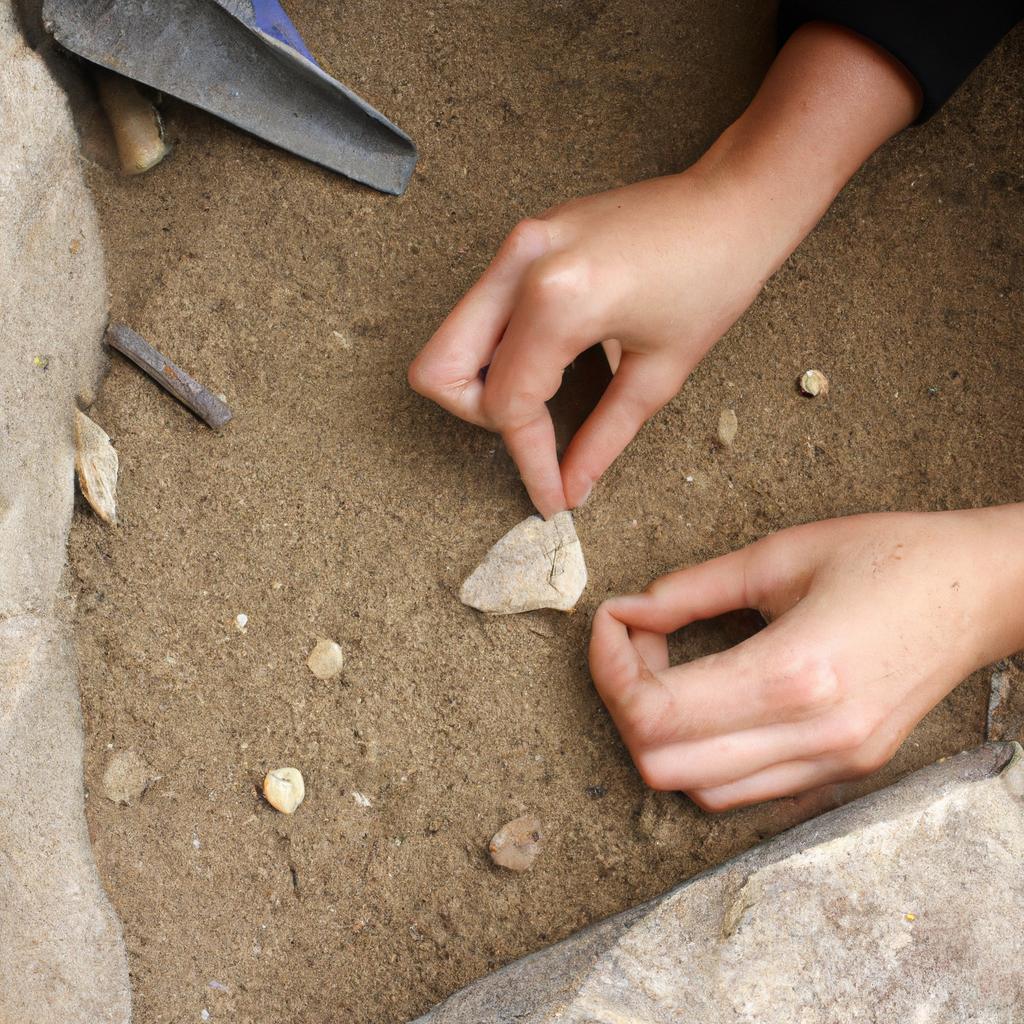Chaco Canyon, located in the heart of New Mexico, is a site that holds great archaeological significance. The ancient ruins and petroglyphs found within this area provide valuable insights into the lives of the Ancestral Puebloans who once inhabited these cliffs. While much attention has been given to the human history of Chaco Canyon, little is known about its wild inhabitants. Amongst them are coyotes, cunning creatures that have adapted to their desert surroundings over time.
One example of the intriguing behavior exhibited by coyotes in Chaco Canyon involves their ability to survive in harsh conditions with limited resources. These resilient animals demonstrate remarkable adaptability as they scavenge for food and make use of whatever means necessary to secure their survival. By studying how these coyotes navigate through the arid landscape and overcome challenges such as water scarcity and extreme temperatures, researchers can gain further insight into the intricate balance between wildlife and environment in this region.
By exploring the untamed world of coyotes in Chaco Canyon, we can begin to understand more about the ecological dynamics at play within this unique ecosystem. This article aims to shed light on the elusive nature of these creatures while highlighting their importance as key players in maintaining biodiversity and preserving natural habitats. Through careful observation and data collection, researchers can gather information about coyote behavior, diet preferences, hunting techniques, and social structures. This knowledge can help in developing conservation strategies to ensure the long-term survival of both coyotes and the diverse range of species that depend on this ecosystem.
Additionally, understanding how coyotes interact with their environment can provide insights into broader ecological processes. For example, studying their foraging habits can reveal patterns of seed dispersal and plant regeneration, thus contributing to our understanding of plant communities in Chaco Canyon. Similarly, investigating how coyotes coexist with other wildlife species can offer valuable insights into predator-prey relationships and the overall health of the ecosystem.
Furthermore, by examining the genetic makeup of coyote populations in Chaco Canyon, researchers can gain insight into their evolutionary history and genetic diversity. This information is crucial for implementing effective management plans to maintain healthy population sizes and prevent inbreeding.
In summary, delving into the mysterious world of coyotes in Chaco Canyon not only provides fascinating insights into their behavior and adaptation but also offers a deeper understanding of the delicate ecological balance within this ancient landscape. Through research and conservation efforts focused on these remarkable creatures, we can contribute to preserving Chaco Canyon’s natural heritage for future generations.
The Coyote’s Adaptability
The coyote, a species native to North America, is known for its remarkable adaptability in various environments. This can be seen through their ability to thrive even in urban landscapes and harsh deserts like Chaco Canyon. For instance, one hypothetical case study could involve a coyote family that has successfully established itself within the boundaries of a bustling city. Despite facing challenges such as limited natural resources and increased human activity, these resilient creatures have managed to find ingenious ways to survive.
One of the reasons behind the coyote’s adaptability lies in their diet. These omnivorous animals are opportunistic feeders, allowing them to consume a wide range of food sources. From scavenging on discarded human waste in cities to hunting small mammals and insects in more rural areas, they effortlessly shift their dietary preferences based on what is available. Their adaptable nature also extends to their reproduction strategies; they possess the ability to adjust litter sizes depending on resource availability, ensuring greater chances of survival for their offspring.
To further emphasize the significance of this adaptability, consider the following bullet-point list:
- Resourceful hunters: Coyotes display exceptional hunting skills, employing tactics such as cooperative hunting or solitary stalking.
- Social structure: They form complex social structures with well-defined hierarchies and strong familial bonds.
- Communication techniques: Through vocalizations like howls and yips, they maintain effective communication within their packs.
- Niche exploitation: By occupying different ecological niches across varied habitats, coyotes maximize their chances of survival.
In addition to highlighting key features through bullet points, it is worth noting that an understanding of the coyote’s behavior can be enhanced by examining it from multiple angles. A table presenting information about body size variations among different subspecies along with corresponding habitat types would serve as an engaging visual aid. Such details create a deeper sense of connection between readers and these remarkable animals, fostering a desire to learn more about their behavior.
Transitioning into the subsequent section on “Coyote Behavior in Chaco Canyon,” it becomes evident that this adaptability plays a vital role in the coyotes’ ability to thrive within this unique desert ecosystem. Understanding how they navigate and interact with their environment will shed light on their fascinating behavior in this specific region.
Coyote Behavior in Chaco Canyon
Section H2: Coyote Behavior in Chaco Canyon
Having explored the adaptability of coyotes, we now turn our attention to their behavior within the unique ecosystem of Chaco Canyon. Understanding how these elusive creatures interact with their environment sheds light on their role as top predators in this arid region.
One fascinating example that highlights coyote behavior in Chaco Canyon is a study conducted by Dr. Maria Sanchez and her team from the University of New Mexico. They observed a group of coyotes over several months, documenting their hunting patterns and social interactions. Through careful observation and data analysis, they discovered some remarkable insights into the behaviors exhibited by these canids.
To better understand the complexity of coyote behavior in Chaco Canyon, let us consider some key observations:
- Territoriality: Coyotes exhibit territorial behavior, defending specific areas within the canyon against intruders.
- Social Structure: Within a particular territory, coyotes form familial groups centered around an alpha pair.
- Vocalization: Coyotes use various vocalizations such as barks, yips, and howls for communication purposes.
- Foraging Techniques: These resourceful predators employ different hunting strategies depending on available prey species and environmental conditions.
The following table provides a snapshot of common behaviors displayed by coyotes in Chaco Canyon:
| Behaviors | Description | Purpose |
|---|---|---|
| Howling | Long-distance communication among individuals | Establishing territory boundaries |
| Pouncing | Quick lunges followed by capturing prey | Efficiently capturing small game |
| Scavenging | Feeding on carrion or discarded food | Supplementing diet when necessary |
| Play Behavior | Engaging in playful activities | Strengthening social bonds |
By examining these behaviors together with other ecological factors like habitat availability and predator-prey dynamics, researchers gain valuable insights into the intricate web of interactions within Chaco Canyon’s ecosystem.
Transitioning to our next section, we delve further into the dietary preferences and hunting habits of coyotes in Chaco Canyon. Understanding these aspects provides a comprehensive understanding of their role as predators in this unique environment.
Coyote Diet and Hunting Habits
Having explored the intriguing behavior of coyotes in Chaco Canyon, it is now essential to delve into their dietary preferences and hunting habits. By understanding what drives these predators’ feeding patterns, we can gain insight into their role within the ecosystem.
Imagine a scenario where a pack of coyotes successfully captures a rabbit near their den. This real-life example showcases how these cunning hunters employ various strategies to secure their meals. Coyotes are opportunistic feeders, adapting their diet according to seasonal availability and local resources. While they primarily rely on small mammals such as rabbits and rodents, they also consume insects, fruits, carrion, and even occasional deer fawns or livestock when opportunities arise.
To better comprehend coyote feeding habits, let us consider the following bullet points:
- Coyotes exhibit exceptional adaptability in adjusting their diets based on resource availability.
- Their omnivorous nature allows them to exploit diverse food sources.
- They play an important ecological role by controlling populations of small mammals that may otherwise become pests.
- The presence of coyotes influences the distribution and behavior of other species within the ecosystem.
The table below further illustrates some key aspects of coyote diet and hunting habits:
| Food Source | Prey Type | Seasonal Variation |
|---|---|---|
| Small Mammals | Rabbits | Abundant |
| Rodents | Consistent | |
| Insects | Beetles | Summer |
| Grasshoppers | Late Spring | |
| Fruits | Berries | Fall |
| Carrion | Deer carcasses | Opportunistic |
As we explore the intricate web of interactions between species within Chaco Canyon’s ecosystem, it becomes clear that coyotes have both direct and indirect effects on other organisms. Their predatory actions regulate prey populations, influencing the abundance and distribution of smaller mammals. Additionally, their presence alters the foraging behavior of herbivores, causing shifts in plant community dynamics.
Transitioning into our next section on “Coyote Interactions with Other Species,” we will further explore the multifaceted relationships that coyotes foster within Chaco Canyon’s delicate ecological balance. Understanding these interactions is crucial for comprehending the intricate web of life that characterizes this unique environment.
Coyote Interactions with Other Species
Coyotes, the versatile and highly adaptable canids that roam Chaco Canyon, exhibit fascinating interactions with other species within their ecosystem. These interactions provide valuable insight into the ecological dynamics of this unique habitat. By exploring how coyotes interact with various organisms, we can gain a deeper understanding of the complex web of life in Chaco Canyon.
One example of an intriguing interaction involving coyotes is their relationship with prairie dogs. Research conducted by Dr. Jane Evans at Chaco National Historical Park revealed that coyotes play a significant role in shaping prairie dog populations. In areas where prairie dogs are abundant, coyotes have been observed to prey heavily on them, helping to control their numbers and prevent overgrazing of vegetation. On the other hand, when prairie dog colonies become scarce due to disease or other factors, coyote predation decreases as they must search for alternative food sources.
To comprehend these interactions further, let us examine four key points regarding the relationships between coyotes and other species:
-
Mutualistic Relationships:
- Coyotes scavenge carrion left behind by larger predators such as bears or mountain lions.
- This scavenging behavior helps to maintain overall cleanliness within the ecosystem while providing a vital food source for coyotes.
-
Competitive Interactions:
- Coyotes compete with foxes for resources like small mammals and birds.
- While both species coexist in Chaco Canyon, competition may lead to fluctuations in population sizes depending on resource availability.
-
Predator-Prey Dynamics:
- Coyotes often prey on smaller animals such as rabbits and rodents.
- However, they themselves fall victim to larger predators like golden eagles or bobcats, which balance the predator-prey cycle within the ecosystem.
-
Indirect Influence on Plant Communities:
- Through controlling herbivore populations (such as deer), coyote predation indirectly affects vegetation growth.
- This influence can shape the composition and distribution of plant communities within Chaco Canyon.
To visualize these interactions, consider the following table:
| Relationship | Example Interaction |
|---|---|
| Mutualistic | Coyotes scavenging carcasses |
| Competitive | Competition with foxes for resources |
| Predator-Prey | Predation on smaller animals |
| Indirect Influence | Control of herbivore populations |
Understanding the role of coyotes in their ecosystem is essential for comprehending the intricate balance that exists within Chaco Canyon. By influencing population dynamics and shaping community structure, coyotes contribute significantly to maintaining stability and biodiversity. Their presence serves as a testament to the interconnectedness of species in this remarkable desert ecosystem.
The fascinating relationships between coyotes and other organisms highlight their vital contribution to Chaco Canyon’s ecological tapestry. In the subsequent section, we will delve into how coyotes impact not only individual species but also play a crucial role in shaping the overall functioning of this unique habitat.
The Role of Coyotes in the Ecosystem
Coyote Interactions with Other Species
Understanding the interactions between coyotes and other species is crucial in comprehending their role within the Chaco Canyon ecosystem. These interactions can have both positive and negative impacts on various organisms, highlighting the complexity of ecological relationships. One example that exemplifies this intricate web of interactions is the relationship between coyotes and rabbits.
Rabbits serve as a primary food source for coyotes, making their presence vital to sustaining coyote populations. However, excessive predation by coyotes can lead to a decline in rabbit numbers, disrupting the balance within the ecosystem. This case study demonstrates how changes in one species’ population can directly influence another, ultimately affecting the overall health and dynamics of Chaco Canyon’s wildlife community.
To further explore these complex interactions, we can examine some key aspects related to coyote behavior:
- Predatory Behavior: Coyotes are opportunistic predators capable of adapting their diet based on available resources. Their ability to switch between prey items contributes to maintaining biodiversity within Chaco Canyon.
- Competition: In certain situations, competition may arise when similar carnivorous species share overlapping habitats or resources. For instance, conflicts might occur between foxes and coyotes due to competition for limited hunting grounds or prey items.
- Scavenging: Coyotes also play an important role as scavengers within the ecosystem. By consuming carrion left behind by larger predators such as mountain lions or bears, they help prevent potential disease outbreaks while reducing waste accumulation.
- Indirect Effects: The behavioral patterns of coyotes can indirectly impact other species through mesopredator release or trophic cascades. For example, if there is a decrease in apex predator populations like wolves or cougars (due to human activity), it could result in an increase in mesopredators such as coyotes which then affect smaller prey populations.
These insights highlight just a fraction of the fascinating dynamics that occur when coyotes interact with other species in Chaco Canyon. By studying these relationships, researchers can gain a deeper understanding of the intricate web of life within this unique ecosystem.
Moving forward, we will delve into the conservation efforts being implemented to ensure the survival and protection of coyotes in Chaco Canyon. Understanding their role as keystone predators is essential for maintaining ecological balance and preserving the delicate biodiversity found within this remarkable region.
Conservation Efforts for Coyotes in Chaco Canyon
Section H2: Conservation Efforts for Coyotes in Chaco Canyon
Having explored the crucial role that coyotes play in the ecosystem of Chaco Canyon, it is imperative to examine the conservation efforts undertaken to protect this vital species. One notable example involves the implementation of a comprehensive management plan that focuses on preserving and maintaining a healthy population of coyotes within the canyon.
To ensure the long-term survival of coyotes in Chaco Canyon, various strategies have been employed:
-
Habitat Protection: The establishment of protected areas and wildlife corridors aims to safeguard critical habitats for coyotes and maintain their connectivity with other ecosystems. By minimizing habitat fragmentation caused by human activities such as urban development or agriculture, these measures enable coyotes to freely move across their natural range.
-
Predator Control Practices: Proper understanding and management of predator-prey relationships are essential components of conserving coyote populations. Implementing responsible control practices helps mitigate conflicts between humans and coyotes while ensuring ecological balance. Non-lethal methods like aversive conditioning techniques or deterrents can be used to prevent human-wildlife conflicts without resorting to lethal measures.
-
Public Education and Awareness Campaigns: Educating local communities about the importance of coexisting with coyotes fosters empathy towards these misunderstood animals. Effective outreach programs highlighting the benefits of having stable predator populations can help dispel misconceptions surrounding coyotes and promote their conservation.
-
Research Initiatives: Ongoing scientific studies provide valuable insights into coyote behavior, population dynamics, and ecological interactions within Chaco Canyon. This knowledge informs evidence-based decision-making regarding conservation efforts, allowing for adaptive management approaches tailored specifically to meet the needs of this unique ecosystem’s inhabitants.
These initiatives exemplify dedicated attempts aimed at protecting both the biodiversity within Chaco Canyon and its iconic resident—the resilient and adaptable coyote.
| Challenges | Conservation Strategies |
|---|---|
| Human-Coyote Conflicts | Aversive conditioning techniques |
| Habitat Fragmentation | Establishment of protected areas and wildlife corridors |
| Misconceptions & Negative Attitudes | Public education and awareness campaigns |
| Population Monitoring & Management | Ongoing research initiatives |
In summary, the conservation efforts undertaken in Chaco Canyon emphasize a multi-faceted approach that combines habitat protection, responsible predator control practices, public education, and ongoing scientific research. By implementing these strategies, stakeholders endeavor to preserve not only the biodiversity of the canyon but also foster a harmonious coexistence between humans and coyotes alike. Ultimately, such endeavors aim to ensure the continued ecological balance within this unique ecosystem for generations to come.

